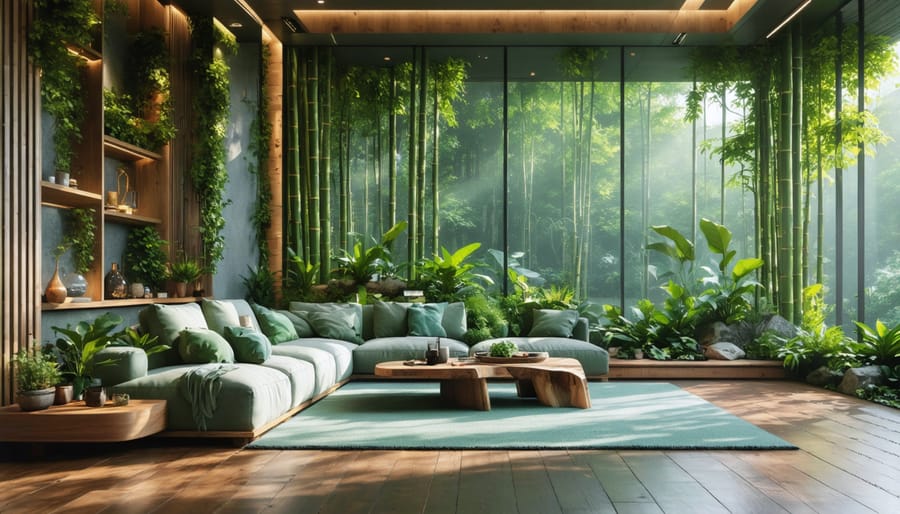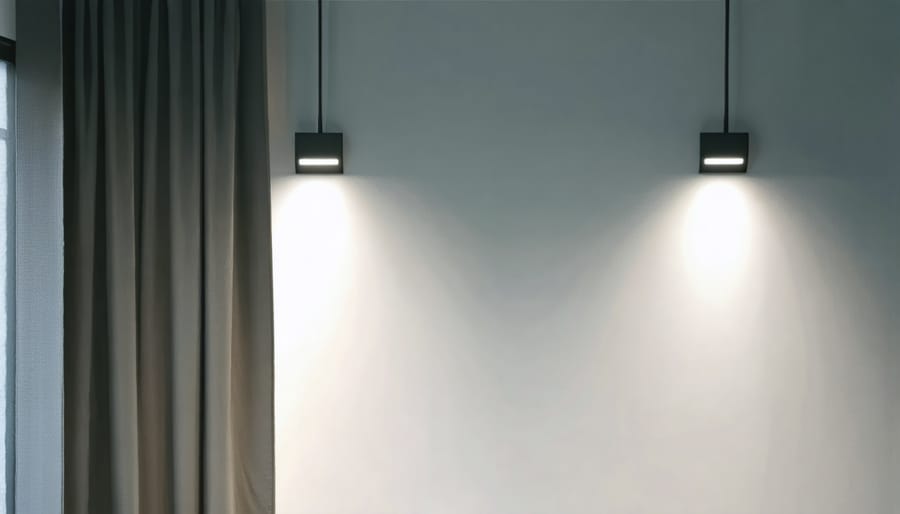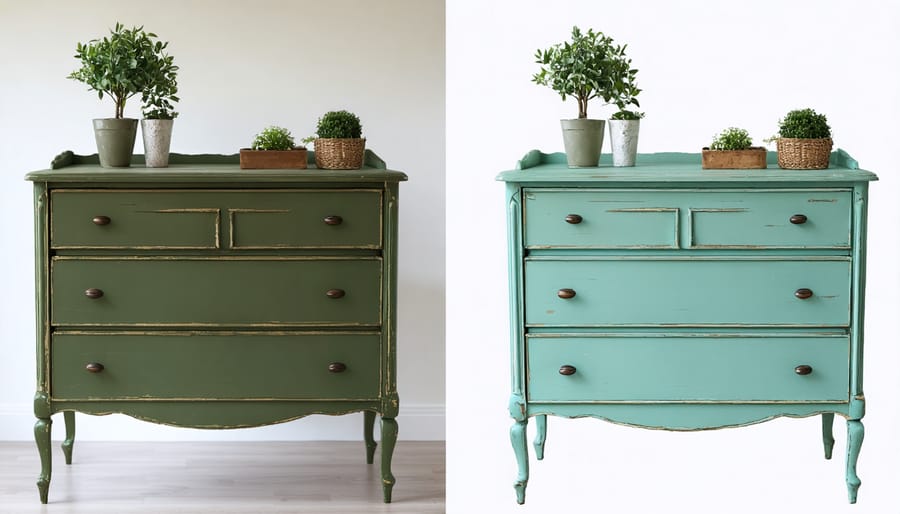
How Sustainable Development Groups Transform Modern Interior Design
Transforming our living spaces into sustainable havens isn’t just a trend—it’s a vital response to our planet’s urgent environmental challenges. The UN Sustainable Development Group (UNSDG) has revolutionized how we approach eco-friendly design and construction, offering a comprehensive framework that bridges global sustainability goals with practical, home-level solutions. From energy-efficient lighting systems to renewable material choices, today’s homeowners and designers have unprecedented opportunities to align their spaces with UNSDG’s vision for a greener future. Whether you’re planning a complete home renovation or simply looking to make small, impactful changes, understanding and implementing these sustainable development principles can transform your living space into an environmentally responsible sanctuary while potentially reducing long-term costs and increasing property value. Let’s explore how you can bring these global sustainability goals right into your home, creating spaces that are both beautiful and environmentally conscious.
Understanding UN Sustainable Development Goals in Interior Design
Key Environmental Goals
The UN Sustainable Development Group has established several crucial environmental targets that directly impact interior design and construction practices. These goals emphasize reducing carbon footprints through smart material choices and energy-efficient solutions. Working with sustainable design consultants can help achieve these objectives while creating beautiful living spaces.
Key goals include increasing the use of renewable materials by 50% by 2030, reducing energy consumption in buildings by 40%, and promoting zero-waste design principles. The group also prioritizes water conservation through efficient fixtures and encourages the use of locally sourced materials to minimize transportation emissions. These targets align perfectly with modern interior design trends, making it easier than ever to create eco-friendly spaces that don’t compromise on style or functionality.
For homeowners and designers, these goals translate into practical guidelines for selecting materials, planning layouts, and implementing energy-saving features that benefit both the planet and their wallet.
Social Impact Considerations
When selecting furniture and decor for sustainable spaces, ethical sourcing plays a crucial role in supporting global communities and protecting our environment. Fair trade materials ensure artisans and workers receive fair compensation while maintaining traditional crafting methods. Look for certifications like FSC (Forest Stewardship Council) for wooden furniture and Global Organic Textile Standard (GOTS) for textiles and upholstery.
Many sustainable furniture makers now partner with indigenous communities and local artisans, preserving cultural heritage while creating unique pieces. These partnerships often result in handcrafted items that tell a story and bring authentic character to your space. Consider bamboo, reclaimed wood, and recycled materials, which not only reduce environmental impact but often support local economies in developing regions.
By choosing ethically sourced materials, you’re contributing to sustainable development goals while creating a meaningful connection between your living space and global crafting communities.
Sustainable Materials for Modern Interiors

Recycled and Upcycled Materials
Incorporating recycled and upcycled materials into your interior design projects not only supports sustainability goals but also adds unique character to your spaces. From reclaimed wood furniture to repurposed industrial elements, these materials offer endless possibilities for creating eco-friendly design solutions that tell a story.
Popular recycled materials include salvaged wood for statement pieces, recycled glass for countertops and decorative elements, and repurposed metal for industrial-chic fixtures. Plastic bottles transformed into fabric for upholstery and curtains offer durability while reducing waste. Even old shipping containers are finding new life as modular furniture pieces.
The benefits extend beyond environmental impact. Recycled materials often cost less than new alternatives, provide superior durability, and create one-of-a-kind pieces that become conversation starters. Plus, the patina and character that comes with previously used materials add depth and authenticity to your design scheme that new materials simply can’t match.
Consider incorporating smaller elements like recycled glass vases, upcycled picture frames, or restored vintage furniture as an easy starting point for your sustainable design journey.
Renewable Resource Options
When it comes to sustainable material choices, bamboo stands out as a rapidly renewable resource that’s both durable and versatile. Growing up to three feet per day, bamboo reaches maturity in just 3-5 years, making it an excellent alternative to traditional hardwoods. Its natural resistance to moisture and pests makes it perfect for flooring, furniture, and decorative elements.
Cork is another fantastic sustainable option, harvested from the bark of cork oak trees without harming them. The trees continue producing cork for up to 200 years, making it a truly renewable resource. Its natural properties include sound absorption, thermal insulation, and antimicrobial characteristics, ideal for flooring, wall coverings, and furniture applications.
Other sustainable materials gaining popularity include reclaimed wood, which gives new life to existing materials, and mycelium-based products made from mushroom roots. Hemp-based materials offer excellent durability and insulation properties, while recycled plastics and metals are being transformed into beautiful, functional design elements that reduce waste while creating stunning spaces.
These materials not only support environmental sustainability but also bring unique textures and natural beauty to interior spaces, making them both practical and aesthetically pleasing choices.
Energy-Efficient Design Solutions
Smart Lighting Systems
Smart lighting systems are revolutionizing how we approach sustainable development in both residential and commercial spaces. These innovative solutions combine energy efficiency with modern convenience, helping property owners reduce their carbon footprint while enjoying enhanced comfort and control.
LED technology forms the backbone of smart lighting, consuming up to 75% less energy than traditional bulbs while lasting significantly longer. When paired with smart controllers, these systems can automatically adjust brightness based on natural light levels and occupancy, ensuring optimal energy use throughout the day.
Motion sensors and programmable timers eliminate waste by ensuring lights are only active when needed. Many systems also offer mobile app integration, allowing users to monitor and adjust their lighting remotely. This feature proves particularly valuable for managing energy consumption in larger buildings or multiple properties.
For maximum sustainability, many smart lighting solutions now incorporate daylight harvesting, which automatically dims artificial lighting when natural light is available. Some advanced systems even integrate with renewable energy sources, making them an integral part of green building initiatives and contributing to broader sustainable development goals.

Natural Climate Control
Natural climate control starts with smart design choices that work with nature, not against it. Strategically placed windows and skylights maximize natural light while reducing artificial lighting needs. South-facing windows capture winter sun for passive solar heating, while properly positioned overhangs block intense summer rays.
Thermal mass materials like concrete floors and stone walls absorb heat during the day and release it at night, helping maintain comfortable temperatures. Living walls and indoor plants act as natural humidifiers and air purifiers, while also creating a welcoming atmosphere.
Smart ventilation design, including cross-ventilation and stack effect principles, can reduce or eliminate the need for mechanical cooling. Installing operable windows at different heights encourages natural airflow, while ceiling fans help circulate air efficiently.
These passive design elements, when properly implemented, can reduce HVAC energy consumption by up to 40%. For existing spaces, adding features like solar shades, thermal curtains, and strategic landscaping can significantly improve natural climate control without major renovations.
DIY Sustainable Design Projects
Upcycling Furniture
Transform old furniture into stunning, sustainable pieces with this eco-friendly renovation guide. Start by sourcing reclaimed materials like salvaged wood, vintage hardware, and low-VOC paints. Before beginning, thoroughly clean your piece and remove any old finishes using natural paint strippers.
For wooden furniture, sand the surface gently with recycled sandpaper, working from coarse to fine grit. Fill any holes or cracks with eco-friendly wood filler made from sawdust and natural adhesives. Apply a primer made from natural materials, followed by your chosen non-toxic paint or finish.
Consider creative touches like replacing handles with vintage finds from local antique shops or using leftover fabric scraps for reupholstery. For metal pieces, remove rust naturally using vinegar and baking soda solutions before applying rust-resistant, eco-friendly paint.
To protect your finished piece, seal it with natural wax or plant-based varnish. Remember to work in a well-ventilated area and dispose of any materials responsibly. Document your transformation process to inspire others and share sustainable renovation techniques within your community.
This approach not only extends furniture life but also reduces landfill waste while creating unique, personalized pieces for your space.

Creating Eco-Friendly Decor
Transform your living space with these eco-conscious decorative elements that align perfectly with fair and sustainable home design principles. Start by creating wall art using reclaimed wood or bamboo, which can be finished with non-toxic, water-based stains. Collect fallen branches and twigs to craft unique centerpieces, combining them with LED string lights for an enchanting natural display.
For textile decor, repurpose old fabrics into decorative pillowcases or wall hangings. Consider using organic cotton or hemp fabrics dyed with natural pigments from plants like turmeric or beetroot. Create striking planters from recycled glass containers or tin cans, adding a fresh coat of eco-friendly paint for a polished look.
Transform wine bottles into elegant vases or candle holders by safely cutting and sanding the edges. For ambient lighting, craft pendant lamps using biodegradable materials like woven grass or bamboo strips. Don’t forget to incorporate living elements – set up a vertical herb garden that doubles as wall art while purifying your indoor air.
Remember to source materials locally when possible and always opt for non-toxic adhesives and finishes in your creative process.
Embracing sustainable design practices isn’t just about following trends – it’s about creating spaces that benefit both people and our planet. By implementing the principles we’ve discussed, you can make a real difference in your home or workplace while supporting the UN’s sustainable development goals. Start small by choosing eco-friendly materials, incorporating energy-efficient lighting, and selecting sustainable furniture pieces. Remember that every choice counts, from water-saving fixtures to locally sourced decor items.
Consider sustainable design as an ongoing journey rather than a destination. Keep learning about new technologies and materials that can enhance your space’s sustainability. Share your experiences with others and inspire them to make environmentally conscious choices in their design projects. By working together, we can create beautiful, functional spaces that contribute to a healthier planet.
Take action today by implementing just one sustainable design practice in your next project. Whether it’s choosing recycled materials or installing smart home technology to reduce energy consumption, you’ll be contributing to a more sustainable future while creating spaces that look and feel amazing.
